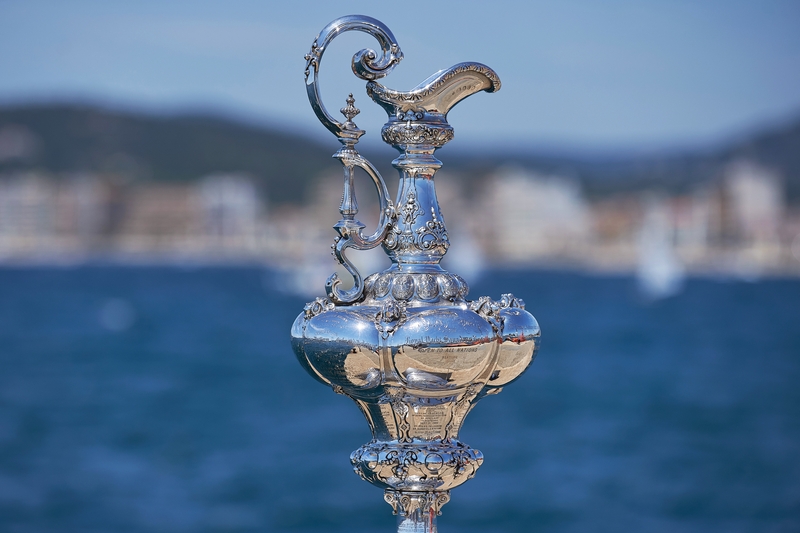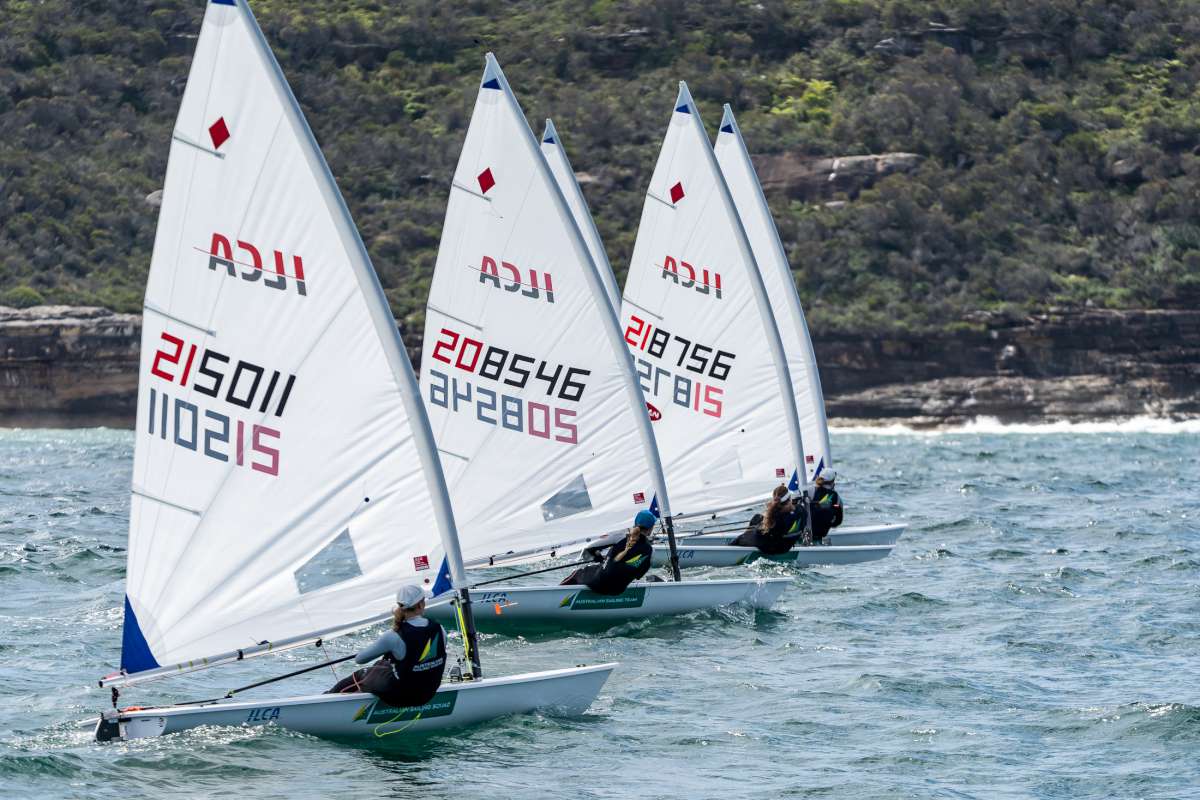Persistent Shift
Make the most of those little sail tufts, indispensible guides for trimmers as well as steerers, by Tony Bull.
ONE of the first lessons sailors are taught from the moment we step behind a wheel or grasp a tiller is to “look at your headsail telltales”. We will continue to hear this ad nauseam for the duration of our sailing life.
When all is said and done, even with high tech computer systems and data feedback the telltales are still the simplest and most efficient way of analysing a sail's performance. Even at the highest levels in the America's Cup all the sails still have rows of telltales and these are the primary concentration point of the helmsman.
There are two key factors in the art of using telltales. Firstly the trimmer must set up and adapt the sail shape to the conditions using the telltales, and secondly the helmsman must read them to get the maximum performance out of the boat. In both these processes there are so many variables to be taken into account, the trimmers and steerers must be aware of what is needed and work together to achieve these goals. There will also be numerous situations where the tactician will ask for a gear change for tactical considerations and all must work together for that cause.
First we must ask what is the norm when sailing along without any outside influence (other boats, marks etc) affecting our sailing.
Setting up
The initial set up for the telltales is finding the right sheeting position when hoisting the sail. Look up and take note of the half height of the sail at the luff or leading edge. This is often quite easy to find because the middle speed stripe (if you have three) will be located in that position. Another easy way is to count the sail panels.
Take a visual line from this point running down through the clew and the sheet initially should form an extension of that line.
On very high aspect sails like blade-style jibs you will find this imaginary line will need to run from higher up the luff of the sail, closer to 60-70 per cent of the luff length.
It is not overly critical to get this right, as now the fine tuning will begin. Start by sailing along on a tight reach in a light to moderate breeze; probably 10-15 degrees off closehauled will suffice. Sheet home the genoa and you will notice all the inside telltales will flow and the outside ones will stall. If this does not happen then sail the boat at a lower angle until it does. It is worth noting that the starboard telltales are always higher on the sail.
Once settled down, position someone where they can see the whole sail and slowly come up on the wind until the windward telltales start to break. What we are looking for here is the sequence; we want the top telltales to break first followed in quick succession by the middle and then lower. If the lower telltales are the first to break or flutter then move the genoa car further aft. If the top telltales break several seconds or longer before the lower ones then move the sheeting position forward.
Keep doing this until you get it right. We are looking for a rolling sequence from top to bottom.
Using the telltales
In light airs we need to generate as much power as we can, so it's advisable to keep the telltales streaming all the time. All the leeward telltales should constantly stream, the only exception being the top windward one lifting slightly. You see many helmsmen make the mistake of sailing into a lighter patch of wind and bearing away when the boat slows, thinking it is a header when it is simply a drop in wind velocity. Keep your eyes on the telltales as the instruments are usually lagging behind time-wise.
In light airs it is sometimes very difficult to set up the telltales to behave in uniform fashion. This is due to wind sheer, which as the name implies is a change of wind speed or direction within a short distance from the top of the rig to the bottom. When we cannot get the telltals to all work together no matter what we try, I usually ask the trimmer to set up as close as he can and the helm to concentrate on the middle telltales.
As the wind increases or a gust strikes, the windward telltale can be “broken” as the helmsman takes the opportunity to use this extra power to take a small bite or scallop to weather. This has a secondary effect as it reduces the extra heel and resulting leeway that occurs as the boat heels. The headsail trimmer should sheet on a touch to flatten the sail and complement the bite to weather. The main trimmer should ease down traveller or take up backstay to also reduce the angle of heel and minimise the leeway and the helm loading up.
Changing gears
There are many times around the race course where we need to adjust our trim for tactical or mark rounding considerations. The most common situation will be coming off the starting line where the fleet is congested and all are looking for clear air and an early advantage.
Despite our best attempts to keep some room clear below us, it is not unusual to find a boat ahead and to leeward trying to put the squeeze on us and get up in a lee bow position right under our bow. Once this happens we have two choices: hang in there in bad air and low speed from the backwash, or tack away.
Both these scenarios present a probable significant loss in distance, particularly if the tack away means having to dip behind a lot of starboard tack boats and/or going off in the wrong direction. In fact strictly speaking whenever we are forced to make a tack rather than choose to make it we are taking a loss.
Nothing is more annoying to a tactician than being forced to be reactive rather than proactive with his or her calls. So when confronted with this scenario we really need to work hard on being able to hold our lane in the clearer air and this means sailing in a “height” mode for as long as we can with trimming on and heavy hiking, even at the expense of some boatspeed; minimising the loss until some of the other boats tack off or a favorable wind shift occurs. This involves a concerted effort from the whole crew and is an example that even the headsail trim can have a significant role to play in the whole tactical situation.
The other obvious situation where we would change into this height mode would be closing on a top mark and finding we are not quite laying up to it. Mind you, don't start pinching too far out from the mark, just sail normally as a lot can happen before you get up close to it.
Conversely there are occasions where simply sailing low and fast is called for. We may recognise a strong, advantageous shift coming in from one side of the course and simply want to get there as fast as we can, or need to roll over the top of a boat pinching to get around a mark.
So when we go training, practise not only sailing along but also switching modes from height to norm to speed and back. Work on making it a team effort, the helmsman using the telltales working in concert with the trimmers and the crew using their weight.
Height or speed
When the call is made for a “height' mode, both main and headsail trimmers should react with the driver. As he or she steers higher into the wind the genoa lead should be moved slightly aft to allow the sail to be sheeted tighter and thus flatter, to enable higher pointing without closing up the slot between the mainsail and headsail. Similarly the mainsail should come up traveller and be sheeted home for the same effect.
Get into the habit of practising variations like “half height” mode where the changes are subtle and less damaging to boat speed, which is great when confronted by an impending problem.
Conversely when the call is for “speed” mode the sails can be powered up by slightly easing the sheets, the genoa car must go forward to stop the head of the sail twisting open and spilling power, the mainsail traveller can simultaneously be dropped down to stop the helm loading up and keep the leech of the mainsail working.
Next month
Now having covered all that, there are times when we don't use our telltales, particularly in heavier breezes and the aforementioned height mode. Other factors come into play and we will look at these next month.
Tony Bull's racing experience ranges from sportsboats to offshore racers, and he is currently tactician on the Rogers 46 Shogun. He runs the Quantum Sails loft in Geelong.























